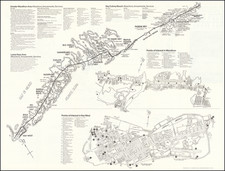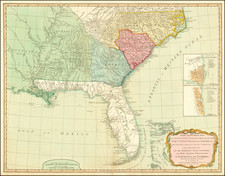Jacksonville in the Silent Movie Era
Detailed city of Jacksonville, Florida, published by the Drew Company in 1913.
The map illustrates the city streets, railroads, subdivisions, waterfront terminals on the St. Johns River.
The title on the printed cover is "Standard Guide of Jacksonville with Map and St. Augustine."
Jacksonville in the early 20th Century
Before Hollywood, the movie industry was based in Fort Lee, New Jersey. In the winter months, the studios moved to Jacksonville due to its warm climate, exotic locations, excellent rail access, and cheaper labor, earning the city the title of "The Winter Film Capital of the World."
Kalem Studios was the first to open a permanent studio in Jacksonville in 1908. Within 10 years, more than 30 silent film companies established studios including Metro Pictures (later MGM), Edison Studios, Majestic Films, King Bee Film Company, Vim Comedy Company, Norman Studios, Gaumont Studios and the Lubin Manufacturing Company. The first motion picture made in Technicolor and the first feature-length color movie produced in the United States, The Gulf Between, was also filmed on location in Jacksonville in 1917.
Jacksonville was especially important to the African American film industry. One notable individual in this regard is the European American producer Richard Norman, who created a string of films starring black actors in the vein of Oscar Micheaux and the Lincoln Motion Picture Company. In contrast to the degrading parts offered in certain white films such as The Birth of a Nation, Norman and his contemporaries sought to create positive stories featuring African Americans in what he termed "splendidly assuming different roles."
Jacksonville's residents did not like elements of the early movie industry, such as car chases in the streets, simulated bank robberies and fire alarms in public places, and even the occasional riot. In 1917, conservative Democrat John W. Martin was elected mayor on the platform of taming the city's movie industry. By that time, Southern California was emerging as the major movie production center, thanks in large part to the move of film pioneers like William Selig and D.W. Griffith to the area. These factors quickly sealed the demise of Jacksonville as a major film destination.
Rarity
The map is rare. OCLC locates 2 examples of a smaller version of the map and a much larger version. The University of Miami holds an example dated 1921.
The seller noted the Provenance as follows;
Provenance: From the collection of Alfred Frankel, M.D. A prominent Florida art historian, Frankel has authored books and written articles for many years on Florida pottery, paintings, etc. He has commissioned Blackwell Auctions of Clearwater, Florida, to sell a significant portion of his personal collection.












![[Florida Indians / Hermaphrodites] Hermaphroditorum officia. XVII.](https://storage.googleapis.com/raremaps/img/small/97966.jpg)
![[Construction of Fort Caroline--Jacksonville, Florida] Wie die Franzosen ein gelegen Ort eine Festung zu bauwen erwehlet](https://storage.googleapis.com/raremaps/img/small/65009.jpg)

![[Untitled Coast chart of North Carolina, South Carolina, Georgia, and Florida, with insets of the harbor of Charleston, S.C. and the entrance of the Saint Johns River]](https://storage.googleapis.com/raremaps/img/small/91737.jpg)
